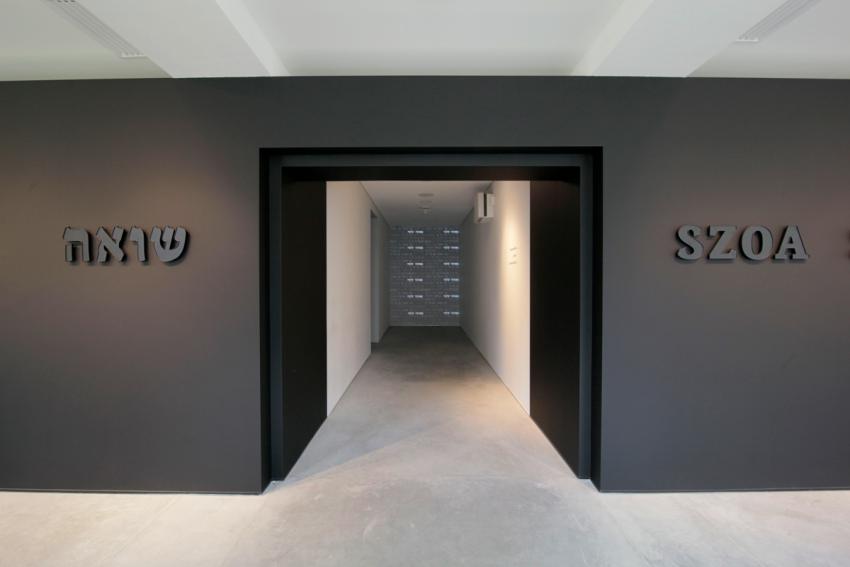

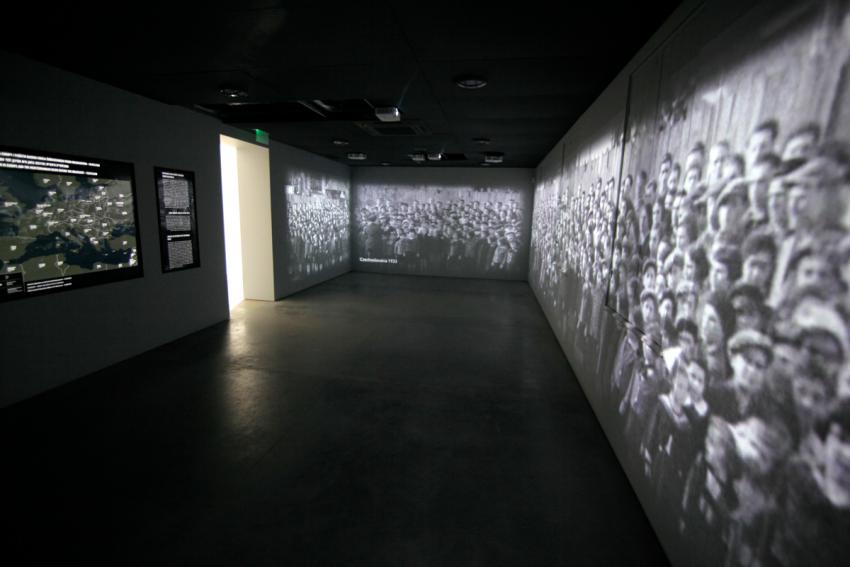

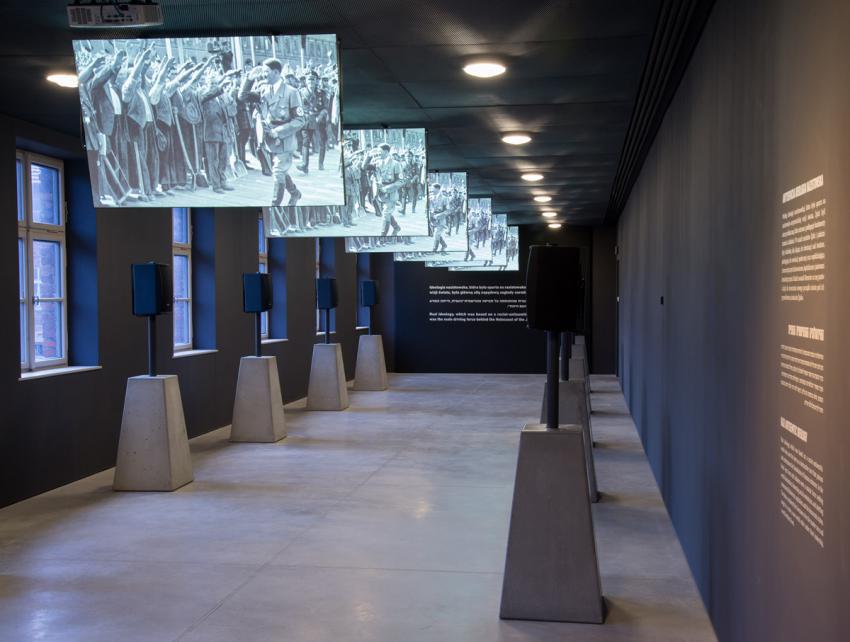

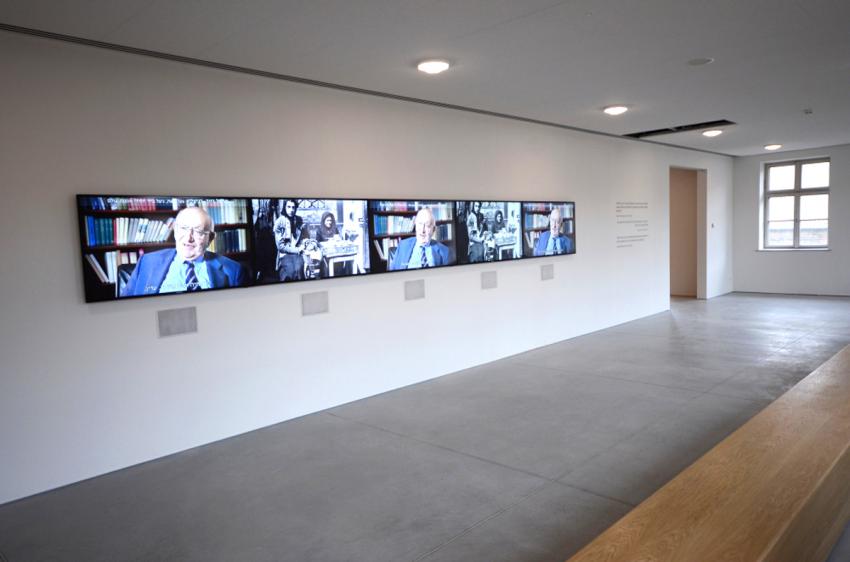

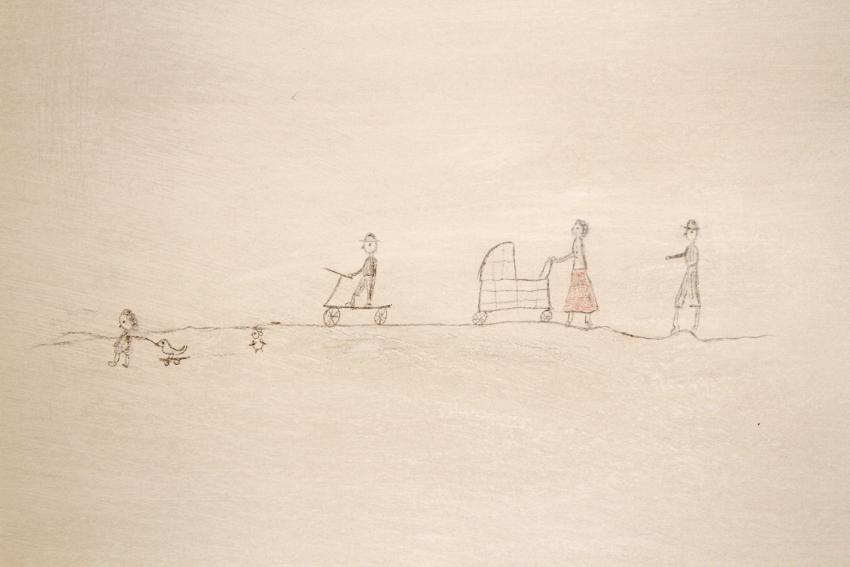

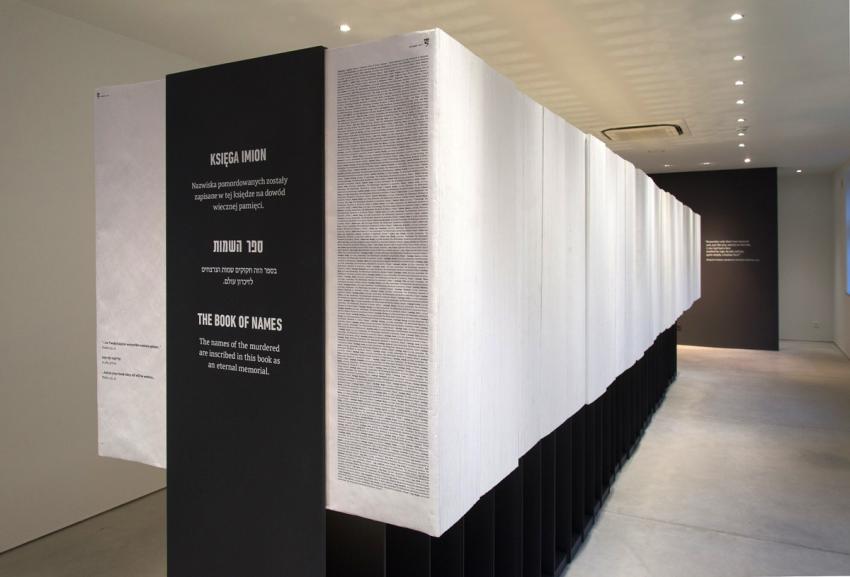

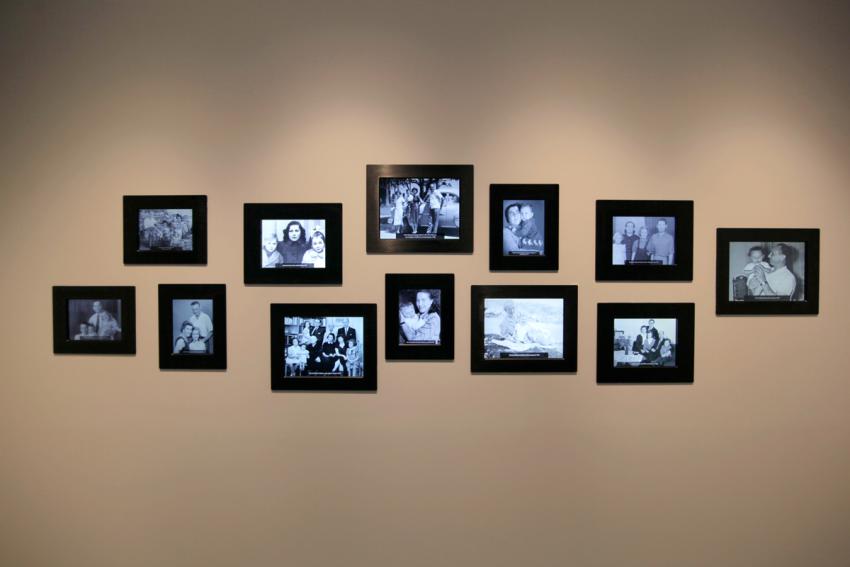

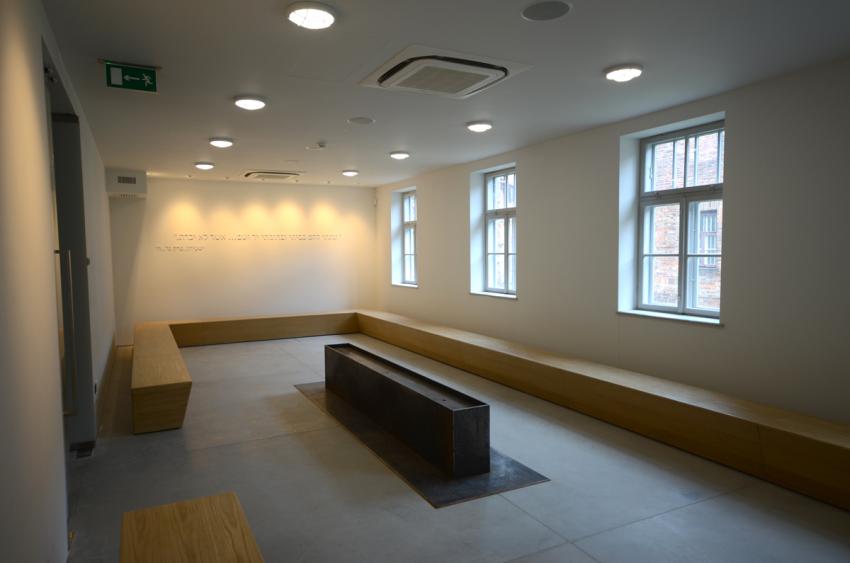

Sunday to Thursday: 09:00-17:00
Fridays and Holiday eves: 09:00-14:00
Yad Vashem is closed on Saturdays and all Jewish Holidays.
Entrance to the Holocaust History Museum is not permitted for children under the age of 10. Babies in strollers or carriers will not be permitted to enter.
















Directly adjoining the exhibition's entranceway, which displays the word Shoah and a definition of the term in English, Hebrew and Polish, is an opening bearing the words and melody of the prayer Ani Ma'amin ("I Believe"), a basic tenet of Jewish faith. Immediately following is a large room that contains a 360-degree cinematic montage of Jewish life before the Shoah. This vital component of the exhibition illustrates the remarkable diversity of Jewish life between the wars. Original footage of various Jewish communities across prewar Europe and North Africa, including rare color images, envelopes the visitor with the sights, sounds and experiences of Jewish men, women and children in their now-extinct home environments. These people – filmed in times of celebration and in times of mourning, at work, in study and on holiday – were as varied in their religious adherence, creative endeavors and professional backgrounds as their non-Jewish compatriots. Integrated into the montage are images of distinguished scholars, eminent philosophers and prominent intellectuals; yet all, without exception, were targeted for total destruction by the brutal Nazi German regime, simply due to their Jewish lineage.
Specially written musical scores accompany this extraordinary presentation of a vibrant and multifaceted people who were decimated – along with their future aspirations and hopes.
On the second floor of the exhibition, visitors enter a room containing a forceful, unmediated presentation of Nazi Germany's ideology. No momentary "clash of interests" was this, but a comprehensive, modern, racist German version of antisemitism, demanding the "redemptive" annihilation of the "dangerous, sub-human" Jewish people in favor of the "superior" Aryan nations.
From loudspeakers flanking the visitor on both sides and from screens suspended from the ceiling above, texts, images and sounds in German, simultaneously translated into English, Hebrew and Polish, portray Nazi dogma and principles that assault the senses and purposely engender an atmosphere of the terror and aggression that characterized Nazism. Here, the roots of the Holocaust are graphically highlighted: Nazi ideology, based on a racist-antisemitic world view, was the main driving force behind the Holocaust of the Jews; Auschwitz-Birkenau, alongside other concentration and extermination camps and killing sites, was a horrifying and most elaborate extension of this creed.
Having been thus exposed to the main precepts of the Nazi ideology that conceived and motivated the Holocaust, visitors proceed into a space dedicated to the murder of the Jews. In stark contrast to the previous space, here a deathly silence prevails. One end of the soundproofed room contains a screen on which images of deported Jews are projected, including pictures from the infamous Auschwitz Album. The other end of the room displays a video feed from the site of the adjoining Birkenau extermination camp, allowing visitors to fathom the significance of their presence at one of the sites where the Nazis committed their genocidal crimes against the Jewish people. But the Nazis and their collaborators did not only murder in Auschwitz-Birkenau: they shot, gassed, starved and worked Jews to death across the length and breadth of Europe. Accordingly, along the room's main wall, an enlarged map displays the "Geography of Murder" – the killing sites and death camps spread far and wide across Nazi-occupied Europe, with a row of embedded digital screens presenting images of the annihilation.
Following the spaces which present Nazi German ideology and the murder of the Jews, this room encourages visitors to comprehend how individuals struggled physically and spiritually amidst the terrible reality of the Shoah. In addition to a range of survivor testimonies, original diaries and letters from that period give voice to the victims – all testifying to their courageous personal efforts to maintain their human dignity. This matchless documentation shows that, with the few exceptions of non-Jews who risked their lives to help, Jews in every occupied country were forsaken by the neighbors amongst whom they had lived. They sought every possible way to safeguard their human image: retaining their own dignity and respect for their fellow human beings, defending their communal, personal and family values, and taking a spiritual and physical stand against those who tried to destroy these universal ideals.
The visitor now passes through the space dedicated to the children and proceeds on to view the Book of Names. At the far end of the space in which the Book of Names is displayed, 12 frames hang upon the wall as if in a family home, displaying photographs of Holocaust survivors with their children and grandchildren. The photographs interchange – some 250 in total – and bear testimony to the lives the survivors rebuilt after the immeasurable trauma each of them endured during the terrible years of the Shoah.
During and after their experience in the new exhibition, visitors may wish to contemplate the existential and philosophical issues arising from human behavior during the Holocaust, and consider how they might take personal responsibility and initiative for a better future. Accordingly, two rooms adjoining the exhibition's exit allow visitors to hold personal or group memorial ceremonies and guided discussions.

Thank you for registering to receive information from Yad Vashem.
You will receive periodic updates regarding recent events, publications and new initiatives.

"The work of Yad Vashem is critical and necessary to remind the world of the consequences of hate"
Paul Daly
#GivingTuesday
Donate to Educate Against Hate


Worldwide antisemitism is on the rise.
At Yad Vashem, we strive to make the world a better place by combating antisemitism through teacher training, international lectures and workshops and online courses.
We need you to partner with us in this vital mission to #EducateAgainstHate
The good news:
The Yad Vashem website had recently undergone a major upgrade!
The less good news:
The page you are looking for has apparently been moved.
We are therefore redirecting you to what we hope will be a useful landing page.
For any questions/clarifications/problems, please contact: webmaster@yadvashem.org.il
Press the X button to continue




